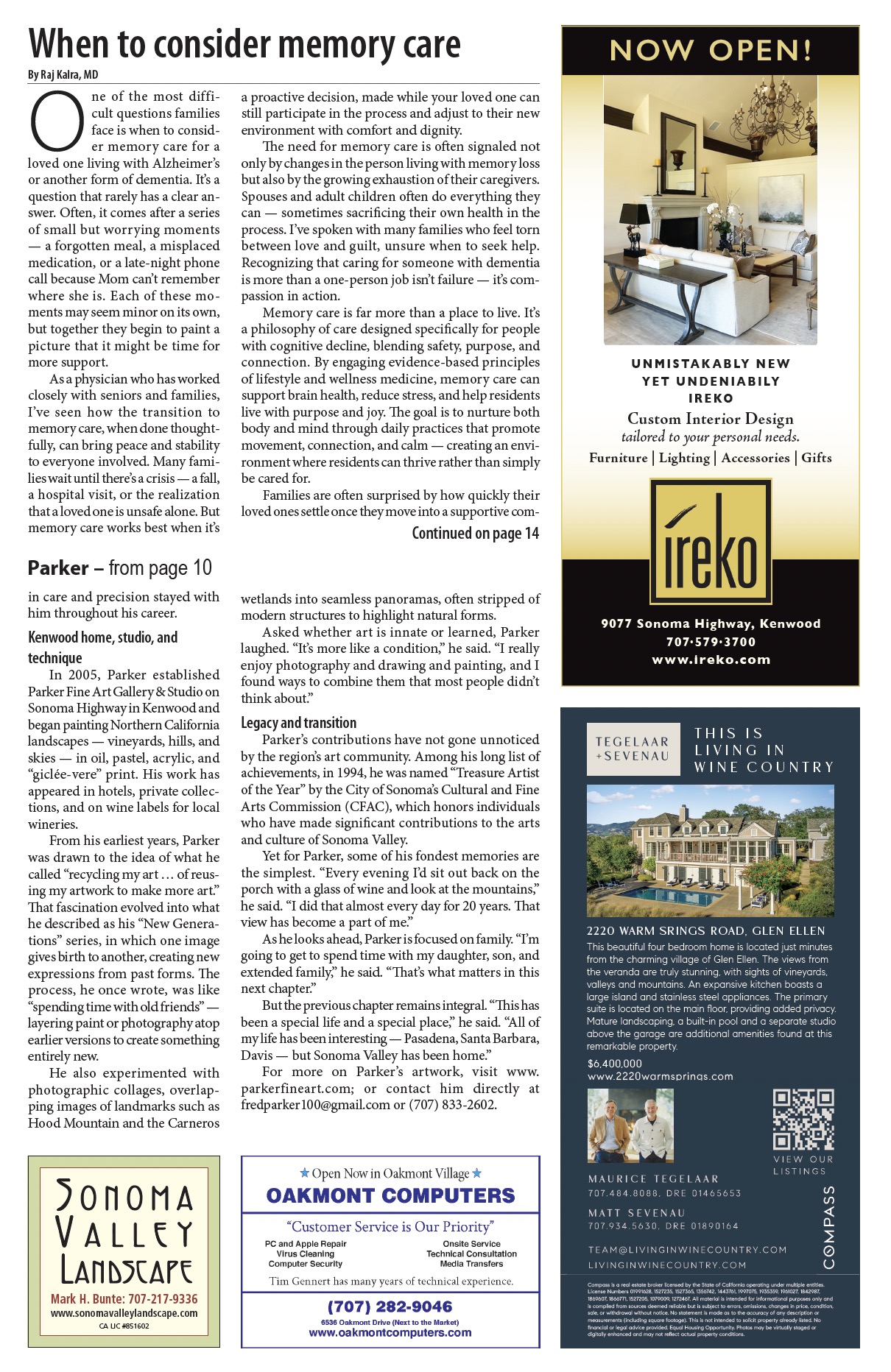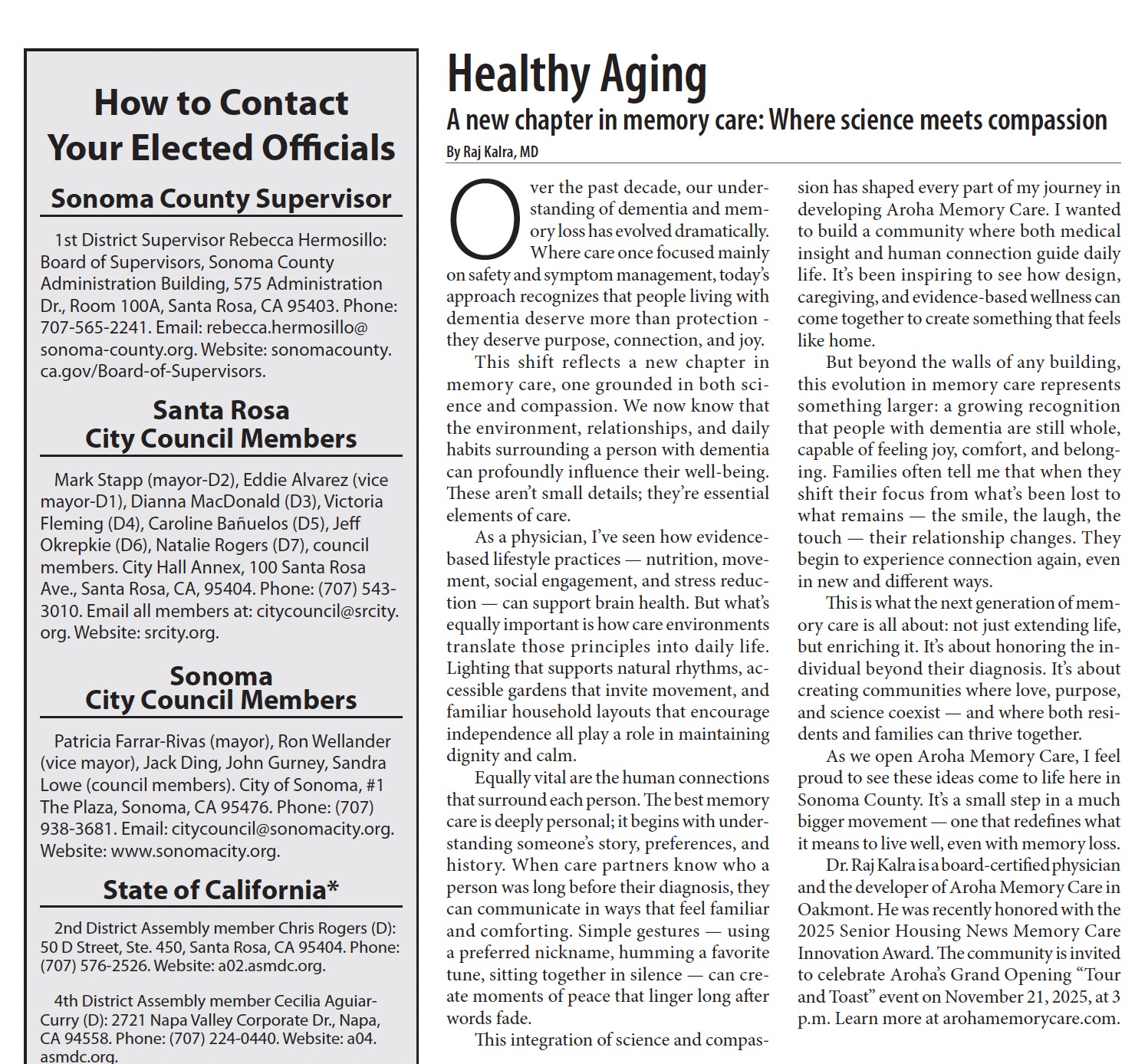FROM OUR BLOG
Design for Life: Creating A Memory Care Environment That Supports Wellness, Identity & Connection

When it comes to caring for people living with dementia, our minds often turn first to staffing ratios, medication management, and safety systems. But one of the most transformative and too often overlooked tools in person centered dementia care is the built environment itself. At Aroha Memory Care, we view the environment not just as a backdrop, but as a co-caregiver, capable of soothing, orienting, and restoring a sense of self.
When you visit Aroha, you will notice that our newly designed environment draws on both biophilic design principles and a person-centered environmental programming approach. We’ve created spaces that are safe and secure but also vibrant, sunlit, and connected to nature. Biophilic design is an architectural approach that incorporates natural elements into the built environment to connect people with nature. It aims to improve health, well-being, and productivity by integrating things like natural light, plants, water features, natural materials, and organic shapes into living and working spaces. This practice is grounded in the idea of an innate human connection to nature.
Dementia can seriously affect how people are able to interpret space, light, sound, and visual cues. Environments that ignore these changes can cause frustration, overstimulation, and confusion. But when design is intentional and when it includes nature-based elements, intuitive layouts, and multi-sensory supports, the space itself becomes a therapeutic intervention.
Some of the most common dementia-related challenges such as agitation, disorientation, and exit-seeking can be directly influenced and even decreased by a purpose-built environment. Here’s how:
- Wandering: Easily navigated, walking paths reduce aimless movement and exit-seeking behavior.
- Agitation: Access to natural light, acoustical control, and calming natural palettes reduces overstimulation and stress.
- Disorientation: Clear sightlines, use of contrast to create visual landmarks, and familiar household elements support wayfinding.
- Isolation: Small, inviting communal spaces foster community member interaction and engagement.
Biophilic design in dementia care is all about bringing nature in and encouraging people to safely explore outdoors. One of the most important ways we support well-being at Aroha is through biophilic connection with a design that honors our innate human need to engage with nature. For people living with dementia, nature can be a source of comfort, orientation, and purpose as they reconnect with lifelong interests.
Our community features:
- Safe, walkable outdoor spaces: Smooth, looped paths through the garden area with seating, shade, and points of visual interest and engagement encourage movement and curiosity.
- Gardens and green views: Therapeutic productive gardening that contributes to the community builds self-esteem. Sensory plants offer color and visual interest, and quiet garden nooks invite spontaneous interaction and reflection.
- Daylight-rich interiors: Floor to ceiling windows allow natural sunlight to assist in regulating circadian rhythms and enhancing mood.
- Indoor-outdoor continuity: Materials, color palettes, finishes, and artwork all echo nature; supporting cognitive harmony and emotional ease.
Nature is not just a setting, it’s a strategy and at Aroha, access to it is part of the flow of every day.
Everyday spaces in memory care should always safely support agency in the community’s members. True person-centered design supports daily living in meaningful, familiar ways. We carefully craft spaces that invite participation, purpose, and pride in everyday tasks.
- The Café features an engageable kitchen: Instead of locking all kitchen features away, we have created an adaptive, supervised kitchen where our Community Members can bake bread, wash fruit, or help prepare meals offering dignity and meaningful contribution to daily life.
- The great room/dining room area will also serve as a creative space during non-meal hours, for hands-on and safe opportunities for art expression, music and dance engagement, exercise and cognitive workouts and discussions.
- Landmarked hallways: Corridors can become opportunities for movement and curiosity, with art featuring local culture and interests, color-highlighted doorways for better wayfinding, and contrasting lean-rails for ease of visualization and mobility support.
Every choice we have made in our design reflects our belief that people living with dementia deserve environments that support their needs and unique dementia-related challenges, but that also provide beauty as they foster connection. When we design with empathy and intention, we shift the model of care from institutional to inspirational. Memory care environments don’t have to be clinical or isolating. They can be filled with life, light, and love.
At Aroha, the environment is never passive. It is intentionally programmatic, therapeutic, and person-centered. It reflects who our Community Members are, who they’ve been, and who they still have the opportunity to be.

Juliet Holt Klinger, a leading gerontologist with nearly 40 years in dementia care, has held executive roles with major organizations in the field. Renowned for creating innovative, person-centered programs, she focuses on integrating emerging technologies to better support older adults with neurocognitive challenges.




